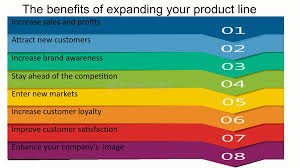Understanding the Concept of “Product as an Entry Point to Additional Product”
In today’s highly competitive market, businesses are constantly looking for ways to engage customers and expand their product offerings. One effective strategy that companies have adopted is using a product as an entry point to additional product. This concept revolves around offering a product that serves as an introduction to a broader range of offerings, thus creating opportunities for cross-selling and upselling.
The idea behind this approach is simple: a customer purchases an initial product that fulfills their immediate needs, but through their interaction with this product, they are introduced to complementary or more advanced products. This approach not only helps businesses to increase revenue but also builds a stronger relationship with customers, as they come to rely on the company for multiple needs.
In this article, we will explore how businesses use a product as an entry point to additional product, the benefits of this strategy, and real-world examples of successful implementation. By the end, you will have a comprehensive understanding of how this approach can be utilized to expand a business’s product ecosystem and customer base.
Table of Contents
How a Product Can Serve as an Entry Point to Additional Products
When a business offers a product as an entry point to additional product, it strategically positions the initial product to draw customers into the broader product ecosystem. The initial product is often designed to be a low-barrier entry that appeals to a wide audience. Once customers are engaged, they are more likely to explore additional products that complement or enhance the initial purchase.
There are several ways a company can leverage this strategy:
- Bundling Products Together: One common method is through product bundling. By offering an entry-level product at a competitive price, businesses can bundle it with other products, encouraging customers to purchase more than they initially planned. For instance, a smartphone manufacturer might offer a discounted phone case when a customer buys a new phone, thus introducing them to accessories that enhance their experience.
- Subscription Models: Another approach is the use of subscription services. Many companies, especially in the digital space, offer free trials or low-cost entry-level products, such as software tools or apps, which then encourage customers to upgrade to a premium service. This model works particularly well for digital products like cloud storage or streaming services.
- Complementary Offerings: A company can also use a product as an entry point to additional product by introducing complementary goods. For example, a consumer may buy a kitchen appliance like a blender, and the company might suggest specialized attachments or accessories that further enhance the functionality of the original product.
Through these methods, businesses can convert a single initial purchase into multiple transactions, fostering long-term customer loyalty and maximizing revenue opportunities.
Benefits of Using a Product as an Entry Point to Additional Product

The strategy of using a product as an entry point to additional product offers multiple benefits for both businesses and customers. Here are some of the key advantages:
- Increased Customer Lifetime Value (CLV): By enticing customers to explore additional products, businesses can significantly increase their lifetime value. When customers are exposed to complementary products, they are more likely to return for additional purchases, resulting in greater revenue over time.
- Improved Customer Retention: The introduction of additional products creates a sense of value and engagement for customers. By offering products that meet various needs or enhance the initial purchase, companies can improve customer retention. Customers are more likely to stay loyal to a brand that continually provides products that enhance their experience.
- Cost-Effective Marketing: With a product as an entry point to additional product, businesses can minimize the cost of acquiring new customers. Rather than spending significant resources on marketing to a completely new audience, companies can leverage existing customer relationships to promote additional products. This method allows for more efficient use of marketing budgets.
- Cross-Selling and Upselling Opportunities: Offering products as entry points creates a natural pathway for cross-selling and upselling. As customers become familiar with one product, they are more open to considering related or more advanced options. This is particularly true if the additional products provide enhanced value or convenience.
- Building a Stronger Brand Ecosystem: When businesses offer a wide range of complementary products, they create a brand ecosystem where customers feel compelled to buy more from the same company. This interconnectedness enhances the brand’s appeal and strengthens customer loyalty.
Examples of “Product as an Entry Point to Additional Product” in Action
Real-world examples can help to better understand how this concept is applied in various industries. Let’s explore a few notable cases where companies have successfully implemented the strategy of using a product as an entry point to additional product.
- Apple’s Product Ecosystem: Apple is a prime example of a company that uses a product as an entry point to additional product. The iPhone, for instance, serves as an entry point into the Apple ecosystem. Once a customer buys an iPhone, they are encouraged to purchase other Apple products like the Apple Watch, AirPods, or iPads, which seamlessly integrate with their existing device. The compatibility between Apple products increases the likelihood of customers continuing to buy from the brand, creating a robust product ecosystem.
- Amazon’s Subscription Services: Amazon uses a free trial of Amazon Prime as a product as an entry point to additional product. When customers sign up for a free 30-day trial, they are introduced to the benefits of Prime, including free shipping, streaming, and other perks. As customers continue using Prime, Amazon subtly encourages them to purchase more items through targeted recommendations, making Prime not just an entry point to membership, but also an entry point to more frequent purchases.
- Software as a Service (SaaS) Companies: Many SaaS companies, such as Dropbox or HubSpot, employ this strategy by offering a free version or entry-level plan of their software. These free plans serve as an entry point to more advanced and feature-rich versions of their products. Once a customer is integrated into the system and uses the software regularly, they are likely to convert to a paid version, increasing the company’s revenue.
- Cosmetics and Beauty Brands: Beauty companies often use a product as an entry point to additional product by offering sample-sized versions of their products. Once a customer tries a product, they are likely to return and buy full-sized versions or other complementary products such as skincare treatments or cosmetics that complement their initial purchase.
How to Implement the Strategy of “Product as an Entry Point to Additional Product”

For businesses looking to implement the concept of product as an entry point to additional product, there are several steps they can take to ensure success:
- Identify Complementary Products: The first step is identifying products that naturally complement the entry product. For example, if your entry product is a fitness tracker, complementary products could include fitness accessories or a subscription to a fitness app.
- Offer Clear Incentives: Incentives, such as discounts, bundled offers, or exclusive features, can encourage customers to explore additional products. Make sure that the added value is clear and compelling, so customers feel they are getting a good deal.
- Personalize Recommendations: Use data-driven strategies to personalize recommendations for additional products. By analyzing a customer’s purchase history and preferences, businesses can suggest products that are highly relevant and increase the chances of upselling or cross-selling.
- Create Seamless Integration: The transition from the entry product to additional products should be seamless. This could involve offering a simple, intuitive buying process or ensuring that the new product is easily integrated with the initial purchase.
- Use Targeted Marketing: Use email marketing, retargeting ads, and other promotional strategies to remind customers of additional products they may be interested in. These efforts should be designed to introduce the customer to new products in a non-intrusive and helpful manner.
Alsp read Taleb on Intervention: Insights into the Balance of Action and Inaction
Conclusion
In conclusion, the strategy of using a product as an entry point to additional product is a highly effective approach for businesses looking to expand their product offerings and drive customer loyalty. By creating an entry-level product that introduces customers to a broader range of products, businesses can increase customer lifetime value, improve retention, and boost sales. Through smart marketing, product bundling, and personalized recommendations, companies can successfully implement this strategy and cultivate a more engaged and loyal customer base.
By taking inspiration from successful examples like Apple, Amazon, and SaaS companies, businesses can apply the principles of product as an entry point to additional product to create stronger, more sustainable customer relationships and drive long-term growth.

